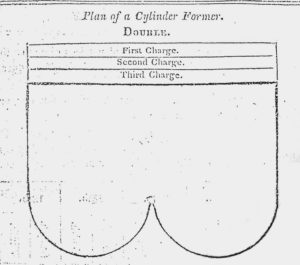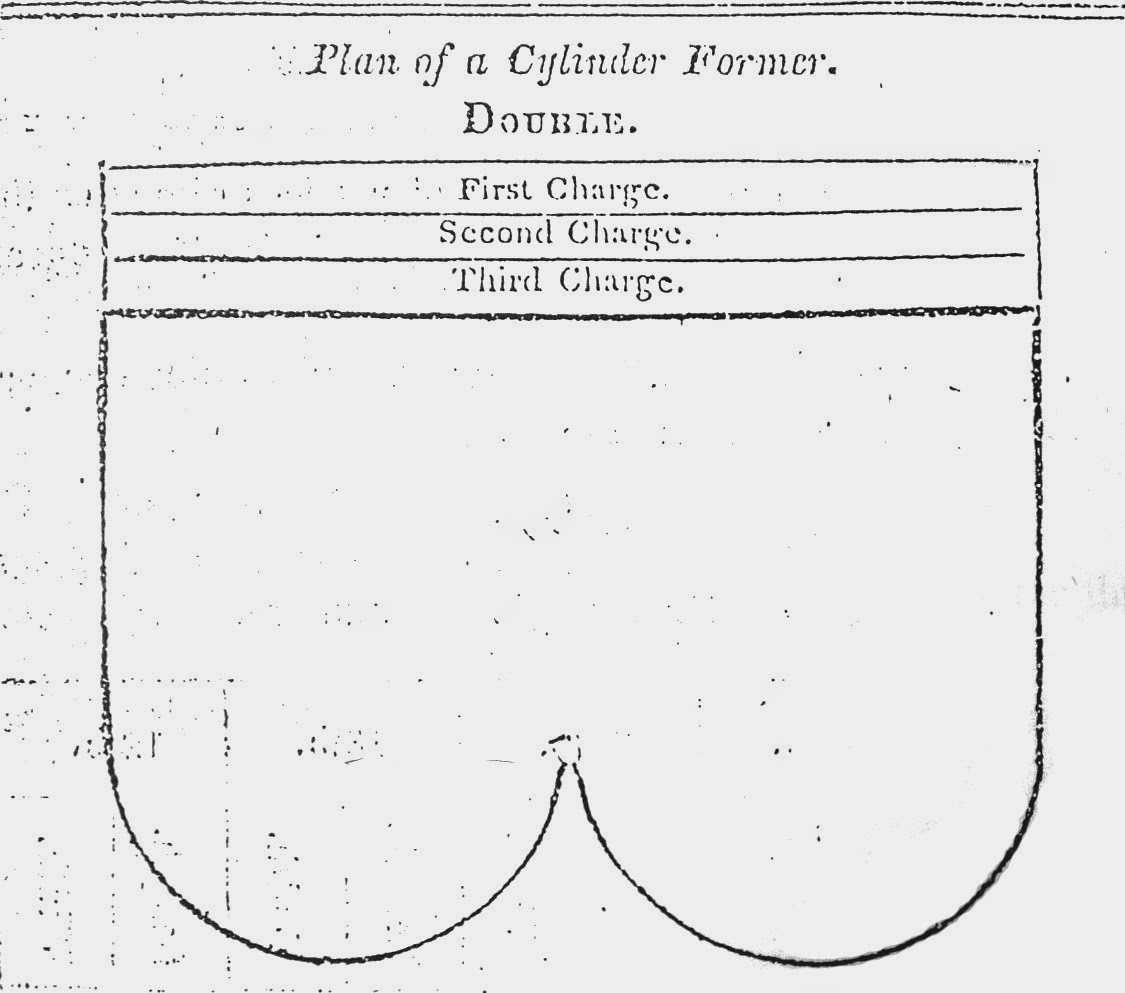As noted frequently in these pages, the early American Navy fondly embraced innovations that gave it a measure of superiority over its opponents. From stoutly constructed frames and bracing members to patent lighting devices and repeating swivel guns, the US Navy’s ships were filled with new inventions calculated to burnish Yankee reputations.
And yet, for years the Navy has been given credit for one innovation that seems to have never been employed in actual service: the lead foil cartridge.
The business about the Americans using lead foil or sheet cartridges during the War of 1812 appears to have originated with British lawyer and author William James. In his Naval History of Great Britain he writes:
We have before remarked upon the great care and expense bestowed by the Americans in equipping their few ships of war. As one important instance may be adduced, the substitution of fine sheet-lead for cartridges, instead of flannel or paper. This gives a decided advantage in action, an advantage almost equal to one gun in three; for, as a sheet-lead cartridge will hardly ever leave a particle of itself behind, there is no necessity to spunge the gun, and very seldom any to worm it: operations that, with paper or flannel cartridges, must be attended to every time the gun is fired. The advantage of quick firing, no one can dispute; any more than, from the explanation just given, the facility with which it can be practised by means of the sheet-lead cartridge. The principal objection against the use of this kind of cartridge in the british navy is its expense: another may be, that it causes the powder to get damp. The last objection is obviated by filling no more cartridges than will serve for present use; and, should more be wanted, the Americans have always spare hands enough to fill them.1
It is easy to see how something so simple could give a ship a decided advantage in battle. Removing the need to sponge and worm a gun significantly sped up the loading time. The problem with James’s account, however, is that all the contemporary American purchasing receipts for the Navy that we’ve seen refer only to flannel cartridges. A perusal of over 800 original receipts for supplies purchased for the Boston Navy Yard and the ships outfitting there during the War of 1812 reveals the Navy bought hundreds of yards of wool flannel for cartridges (or cylinders, as they were typically called in the period). These were cut to a standard pattern and sewn up either at the Navy Yard or on board ship by the gunner and his mates. In fact, Gunner George Marshall’s Practical Marine Gunnery (1822) gives a pattern and discusses how the cylinders should be made. In addition, all the ordnance manuals for the US Navy right up through the Civil War specify flannel cartridges.

Receipts for “gunner’s Department” stores taken on board Constitution in October 1812 mention “2 Rolls Sheet Lead,” but it is likely the gunner used this to make vent covers (to keep water out of the cannon vent) and not powder cylinders.
Despite the lack of evidence for their use, there is evidence that Americans had contemplated the idea. In 1811, none other than future Secretary of the Navy William Jones wrote a long letter to the American Philosophical Society in Philadelphia extolling the benefits of lead foil cartridges. According to Jones,
[I]n the year 1805, when at Canton in China, I caused to be made one hundred cartridges of thin sheet lead, with a portion of tin, to give it more tenacity.—One half were of six, and the other of four, pounder calibre; I have yet remaining between 80 and 90.— The whole cost five dollars; but if the order had been for a considerable quantity, the price would doubtless have been much reduced.
On my passage that year in the ship Ploughboy, from Canton to Philadelphia, I took an opportunity to make a fair experiment, and fired six rounds from a four pounder in quick succession, by instantly inserting the charge without spunging; and then upon cleaning out the gun, I found only a small portion of lead, nearly of the size and form of mustard seed shot, and in quantity only sufficient to cover a surface of an inch square.
The lead cartridge may be perforated with as much ease as paper; and as it is not necessary to ram home the charge, or prime the gun, until intended to be used, it may remain at all times in the gun, ready for service, without injury from wet or damp.2
In light of Jones’s interest in the subject, it would seem reasonable that he might have ordered the new cartridges into service, at least experimentally, after he took the reins of the Navy Department in 1813. And yet, as noted before, we can find no evidence of their manufacture or use.
It is interesting to note that in the post war reports of British officers visiting the United States to review the state of the American Navy, not one of them mentioned lead cartridges. They were quite enamored of new gun locks, dispart sights, boarding caps, improved rudder heads, and Chamber’s repeating muskets and swivels, but not a one of them said anything of the use of lead cartridges.
1 William James, The Naval History of Great Britain, vol. 6 (London: Harding, Lepard and Co., 1826), 148-149.
2 Transactions of the American Philosophical Society, Held at Philadelphia for Promoting Useful Knowledge, Vol. 1 (Philadelphia: A. Small, 1818), 137-145.
The Author(s)
Matthew Brenckle
Research Historian, USS Constitution Museum
Matthew Brenckle was the Research Historian at the USS Constitution Museum from 2006 to 2016.
